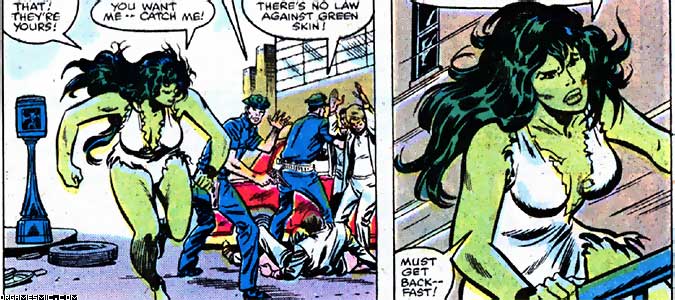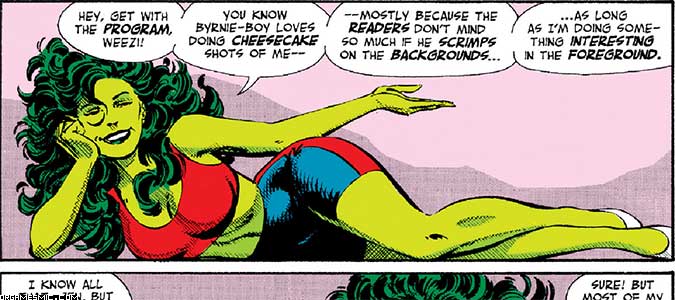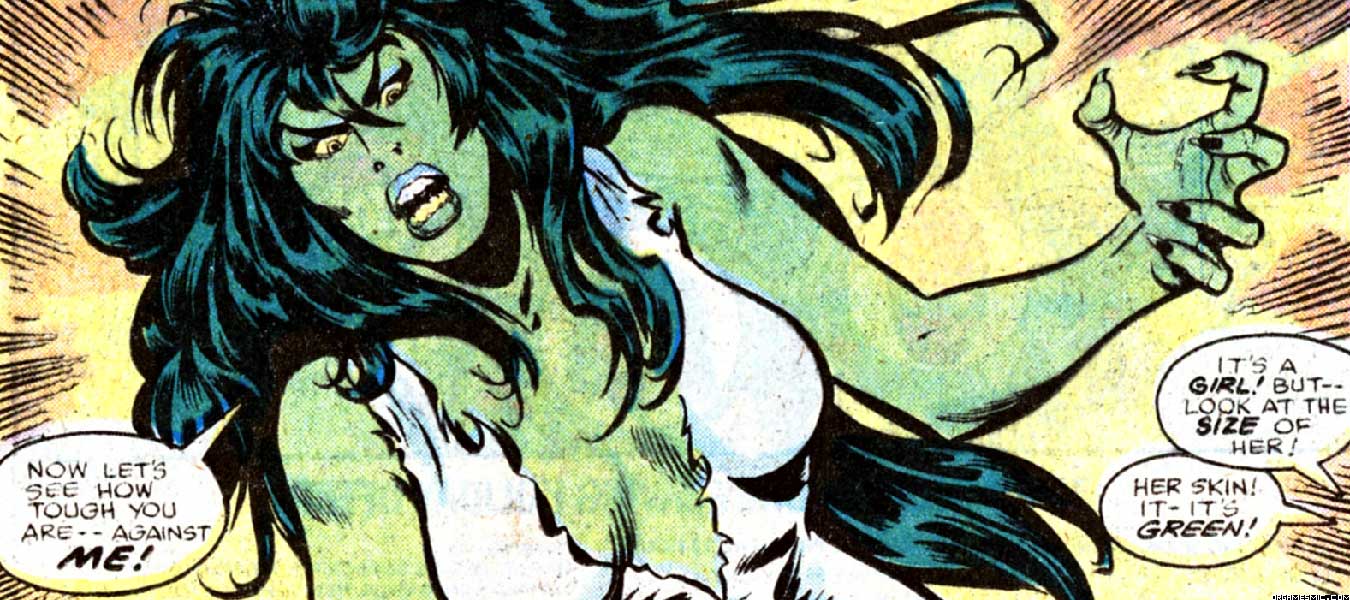This page may contain one or more affiliate links, which means that if you purchase a product through that link, I may receive compensation. The links will be identified with the text "affiliate link". Click to learn more.
Since Jennifer Walters first appeared as She-Hulk in 1980, she has certainly made a splash since then. As commonly seen with many popular male superheroes in the past, it was only a matter of time that a female equivalent to The Hulk was created. Over time she was given subtle differences to make Jennifer Walter’s version of the green monster different than the Bruce Banner variant. She-Hulk’s transformation had been so dramatic that changes span for at least 40 years.
The first time we saw Jennifer Walters was in the first issue of Savage She-Hulk. A visit from her cousin Bruce Banner and an attempted assassination on her life lead to a blood transfusion that would change her life forever. It wasn’t until some mobsters tried to chloroform her in the hospital so they could kill her did we all witness the first She-Hulk Transformation. Walters herself was surprised at this, not knowing what was to happen. Like the Hulk, she discovered that she had significantly increased strength and was able to do things like lift an elevator and pull a street pole out of the ground.

It should be notable that Savage She-Hulk was created by Stan Lee and drawn by John Buscema. This is the same team that wrote How to Draw Comics the Marvel Way (Affiliate Link), the classic how-to book with endless reprints. Buscema had been working for Marvel Comics for so long that he had done work for the company while it was still known as Timely Comics.
A key point when observing She-Hulk’s transformation over time was when John Byrne took over as an artist and writer. After gaining traction as a popular hero in Fantastic Four, popular artist John Byrne did what he does best and turned Jennifer Walters into a sex symbol for the new series Sensational She-Hulk. The new series was a comedic joke, constantly breaking the fourth wall by having She-Hulk addressing the reader. Combined with typical comic book action, this sudden shift in gears feels awkward. But what is most awkward above all else is how in virtually ever issue She-Hulk is given a new excuse to be naked, topless, or in her underwear. Sometimes this was even implied on the cover itself, trying to trick you into buying the issue. The only major point I would that John Bryne added was that, after being exposed to another dose or radiation, She-Hulk could not ever transform back into Jennifer Walters.

Did She-Hulk keep her popularity over the years? Not really. In 2016 she starred in a series simply titled Hulk. Apparently it didn’t do so well because it was cancelled two years later. The bottom line is that she is an empty, needless character that mostly existed for her sex appeal. This criticism has also been applied to Supergirl, who was never necessary as Superman’s counterpart was typically Wonder Woman.
What are your thoughts on She-Hulk’s transformation over the years? Leave a comment.

